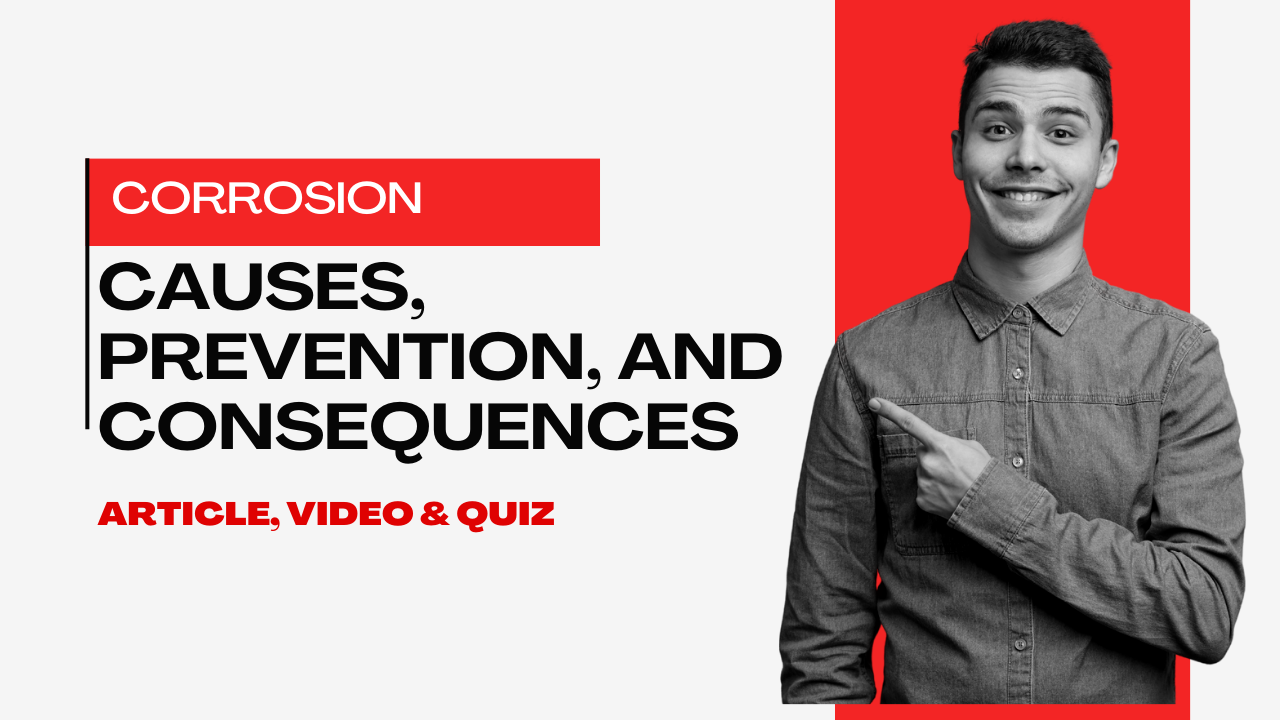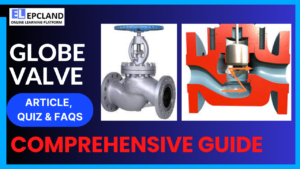Corrosion is a ubiquitous and persistent challenge that affects a wide range of industries, from manufacturing to infrastructure. Understanding the causes, implementing effective prevention measures, and grasping the consequences of corrosion are crucial for maintaining the integrity and longevity of various materials. In this comprehensive guide, we delve into the world of corrosion, providing insights, strategies, and solutions.
Table of Contents
Don’t miss the Complete Course on Piping Engineering: Check Now
By EPCLand.com
The Silent Culprit: Unveiling the Causes of Corrosion
Corrosion is the gradual deterioration of materials due to chemical reactions with the environment. Several factors contribute to its onset:
1. Moisture and Humidity
High humidity and moisture levels accelerate the corrosion process, especially in metals like iron and steel. Water acts as a catalyst, promoting the formation of rust and other corrosive compounds.
2. Oxygen Exposure
Oxygen, a key component of the air we breathe, plays a significant role in corrosion. When metals come into contact with oxygen, they form metal oxides, leading to degradation.
3. Chemical Reactions
Industrial environments often expose materials to chemicals that can trigger corrosive reactions. Acids, alkalis, and other compounds can corrode surfaces upon contact.
4. Electrochemical Reactions
Electrochemical corrosion occurs when metals come into contact with conductive solutions. This phenomenon, known as galvanic corrosion, happens when two dissimilar metals are in contact, creating a miniature battery effect that accelerates corrosion.
Preventing Corrosion: Strategies for Longevity
Addressing corrosion requires a proactive approach to prevent its onset and minimize its impact:
1. Protective Coatings
Applying protective coatings like paint, epoxy, or zinc can act as barriers against environmental elements, hindering direct contact between the metal surface and corrosive agents.
2. Cathodic Protection
Cathodic protection involves connecting a sacrificial anode, often made of zinc or magnesium, to the metal structure. This sacrificial anode corrodes instead of the structure, safeguarding it from degradation.
3. Corrosion Inhibitors
Corrosion inhibitors are compounds added to environments or materials to slow down the corrosion process. They work by forming a protective layer on the surface, shielding it from corrosive agents.
4. Proper Design and Material Selection
Choosing corrosion-resistant materials and designing structures to minimize moisture retention can significantly reduce the likelihood of corrosion.
The Ripple Effect: Consequences of Corrosion
The consequences of corrosion extend far beyond aesthetics. They encompass safety risks, economic burdens, and environmental impacts:
1. Structural Integrity Compromises
Corrosion weakens materials, compromising the structural integrity of buildings, bridges, pipelines, and more. This can lead to catastrophic failures, endangering lives and property.
2. Financial Implications
Corrosion-related maintenance, repairs, and replacements cost industries billions of dollars annually. The expenses associated with addressing corrosion-related issues are substantial and can disrupt operations.
3. Environmental Concerns
Corrosion can lead to leakages of hazardous materials, causing environmental contamination and endangering ecosystems. Additionally, the production and disposal of corrosion-related waste contribute to environmental degradation.
FAQs: Answering Your Corrosion Queries
Q1: Can corrosion be completely eliminated? A1: While complete elimination is challenging, effective prevention measures can significantly reduce its occurrence and impact.
Q2: Is corrosion only a concern for metal materials? A2: Corrosion primarily affects metals, but non-metal materials can also degrade over time due to environmental factors.
Q3: How does corrosion impact industries like oil and gas? A3: Corrosion in these industries can lead to pipeline leaks, production disruptions, and environmental disasters, underscoring its severity.
Q4: Are there eco-friendly corrosion prevention methods? A4: Yes, environmentally friendly coatings and inhibitors are available that offer effective protection while minimizing environmental impact.
Q5: Can corrosion be visually detected early? A5: In many cases, corrosion starts beneath the surface and is not immediately visible. Regular inspections and monitoring are crucial for early detection.
In conclusion, understanding corrosion’s causes, implementing prevention measures, and acknowledging its consequences are paramount for industries and infrastructure worldwide. By adopting proactive strategies and investing in research for innovative solutions, we can mitigate the adverse effects of corrosion, ensuring the longevity, safety, and sustainability of materials and structures. Through collective efforts, we can safeguard our environment, finances, and societal well-being from the silent but impactful threat of corrosion.
Recommended courses (Published on EPCLand)
- Basics of Piping Engineering
- Piping Layout Engineering
- Piping Material Engineering
- Piping Stress Analysis
- Complete Course on Piping Engineering
- Material Requisitions
- Piping Material Specifications
- Valve Material Specifications
Don’t miss the published articles on following:
Related Video
Attempt Quiz
Question 1:
What is corrosion?
Explanation: Corrosion is a chemical reaction that involves the degradation of materials, especially metals, due to environmental factors.
Question 2:
Which of the following is a common cause of corrosion?
Explanation: The presence of moisture and corrosive agents, such as acids, salts, and chemicals, is a common cause of corrosion.
Question 3:
What is a common method of preventing corrosion in metals?
Explanation: Using protective coatings or paints is a common method of preventing corrosion in metals. These coatings create a barrier between the metal and corrosive agents.
Question 4:
What are some potential consequences of corrosion?
Explanation: Corrosion can lead to structural integrity loss, reduced lifespan of materials, and safety hazards, which are some of the potential consequences.
Question 5:
Which of the following materials is most resistant to corrosion?
Explanation: Stainless steel is known for its high resistance to corrosion, making it a preferred choice in environments where corrosion is a concern.



